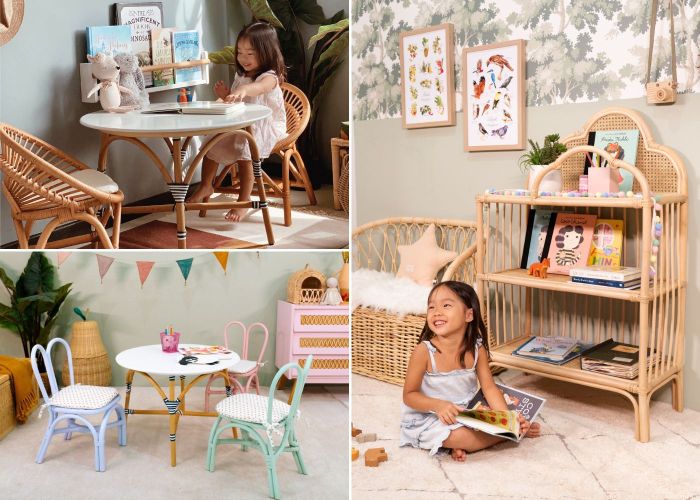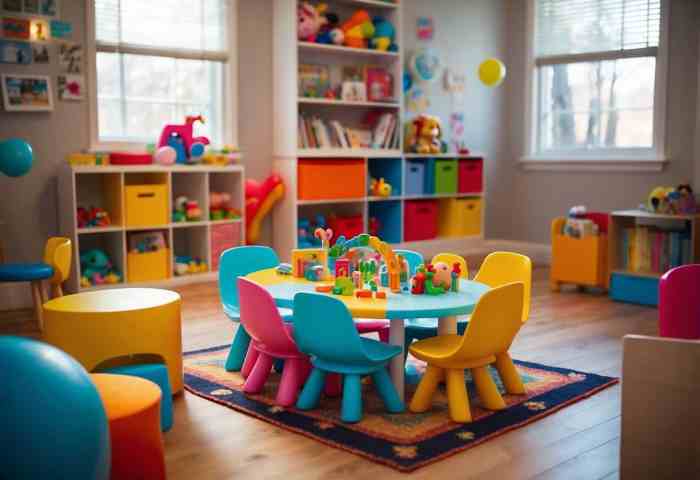Furniture for kids is more than just beds and chairs; it’s about creating a space that fosters growth, creativity, and safety. Choosing the right furniture involves considering not only aesthetics but also durability, functionality, and age-appropriateness. From whimsical designs to practical storage solutions, the options are vast, allowing parents to tailor their child’s environment to their unique needs and personality.
This exploration delves into the key factors to consider when selecting furniture that is both child-friendly and stylish.
This guide will cover various aspects of children’s furniture, including materials, safety standards, design considerations, and practical tips for creating a functional and aesthetically pleasing space for children of all ages. We will explore different types of furniture, such as beds, desks, chairs, storage solutions, and play areas, highlighting the importance of choosing pieces that are both durable and safe.
Creating a safe, comfortable, and stimulating environment for your child is paramount. A significant part of achieving this lies in selecting the right furniture. This comprehensive guide explores various aspects of children’s furniture, from cribs and toddler beds to desks and storage solutions, offering insights to help you make informed decisions.
Choosing the Right Crib or Toddler Bed
The crib is often the first piece of furniture you’ll buy for your baby. Safety is paramount. Look for cribs that meet current safety standards, such as those set by the Consumer Product Safety Commission (CPSC) in the US. Key features to consider include:
- Sturdy construction: Ensure the crib is made of solid, non-toxic materials and is well-built to withstand the rigors of daily use.
- Proper spacing between slats: Slats should be spaced no more than 2 3/8 inches apart to prevent your child’s head from getting trapped.
- Non-toxic finishes: Avoid cribs with lead-based paint or other harmful chemicals.
- Adjustable mattress height: This allows you to adjust the mattress height as your baby grows, ensuring safety and ease of access.
- Convertible cribs: These can often convert into toddler beds or even full-size beds, extending their lifespan and saving you money in the long run.
Transitioning to a Toddler Bed, Furniture for kids
The transition from crib to toddler bed is a significant milestone. Choose a bed that is low to the ground to minimize the risk of falls. Consider beds with guardrails for added safety, especially during the initial transition period. Look for beds made from durable materials and designed to withstand the wear and tear of active toddlers.
Essential Furniture for Toddlers and Preschoolers
As your child grows, their needs change. You’ll likely need additional furniture to accommodate their evolving activities and storage requirements.
- Toddler chairs and tables: These provide a dedicated space for creative play, drawing, and snack time. Choose child-sized furniture that encourages independence and imaginative play.
- Bookshelves: Instilling a love of reading early is crucial. A child-sized bookshelf allows your child to easily access and organize their books, encouraging independent reading habits.
- Toy storage: Bins, baskets, and chests provide organized storage for toys, preventing clutter and encouraging tidiness. Opt for colorful, attractive storage solutions that appeal to your child.
- Dressers and wardrobes: As your child grows, they’ll need space to store their clothes and belongings. Choose child-safe dressers with sturdy construction and smooth edges.
Furniture for School-Aged Children
School-aged children require furniture that supports their learning and development. A dedicated study area is essential for homework and creative pursuits.
- Children’s desks and chairs: Invest in an ergonomically designed desk and chair to support good posture and prevent back pain. The chair should be adjustable to accommodate your child’s growth.
- Bookshelves and storage units: Provide ample storage for school supplies, books, and other materials. Open shelving allows for easy access, while drawers and cabinets keep things organized.
- Bunk beds or loft beds: Space-saving options, particularly useful in smaller rooms. Ensure they meet safety standards and are sturdy enough for your child’s age and weight.
Choosing Safe and Durable Materials
When selecting children’s furniture, safety and durability are paramount. Prioritize furniture made from:
- Solid wood: A durable and sustainable option, offering longevity and resilience.
- High-quality particleboard or MDF: These materials can be cost-effective and durable when properly constructed.
- Non-toxic finishes: Look for furniture with non-toxic paints, stains, and finishes that are safe for your child’s health.
Avoid furniture with sharp corners or edges. Rounded edges and corners minimize the risk of injuries.
Frequently Asked Questions (FAQ)
- What age should a child transition from a crib to a toddler bed? Most children transition between 18 months and 3 years old, but this depends on the child’s development and readiness.
- What are the best materials for children’s furniture? Solid wood and high-quality particleboard are durable and safe options.
- How can I ensure the safety of my child’s furniture? Check for safety certifications, avoid sharp edges, and ensure the furniture is sturdy and well-constructed.
- What are some space-saving furniture options for kids’ rooms? Bunk beds, loft beds, and multi-functional furniture are excellent space-saving choices.
- How often should I inspect my child’s furniture for safety hazards? Regularly inspect the furniture for loose screws, damaged parts, or any potential hazards.
Resources
Call to Action: Furniture For Kids
Creating a comfortable and safe space for your child is an investment in their well-being. By carefully considering the factors Artikeld in this guide, you can choose the perfect furniture to support your child’s growth and development. Start browsing our selection of high-quality, child-safe furniture today!
FAQ Overview
What are the best materials for kids’ furniture?
Solid wood is generally preferred for its durability and sustainability. However, sturdy manufactured wood options are also available and often more affordable. Avoid materials with sharp edges or small parts that could pose a choking hazard.
How can I ensure the safety of my child’s furniture?
Look for furniture that meets relevant safety standards. Check for sharp corners, unstable designs, and potentially hazardous small parts. Secure furniture to the wall if it’s tall or tippy to prevent tipping accidents.

What size furniture is appropriate for different age groups?

Furniture should be appropriately sized for your child’s height and age to ensure comfort and safety. Consider adjustable furniture options for growing children.
